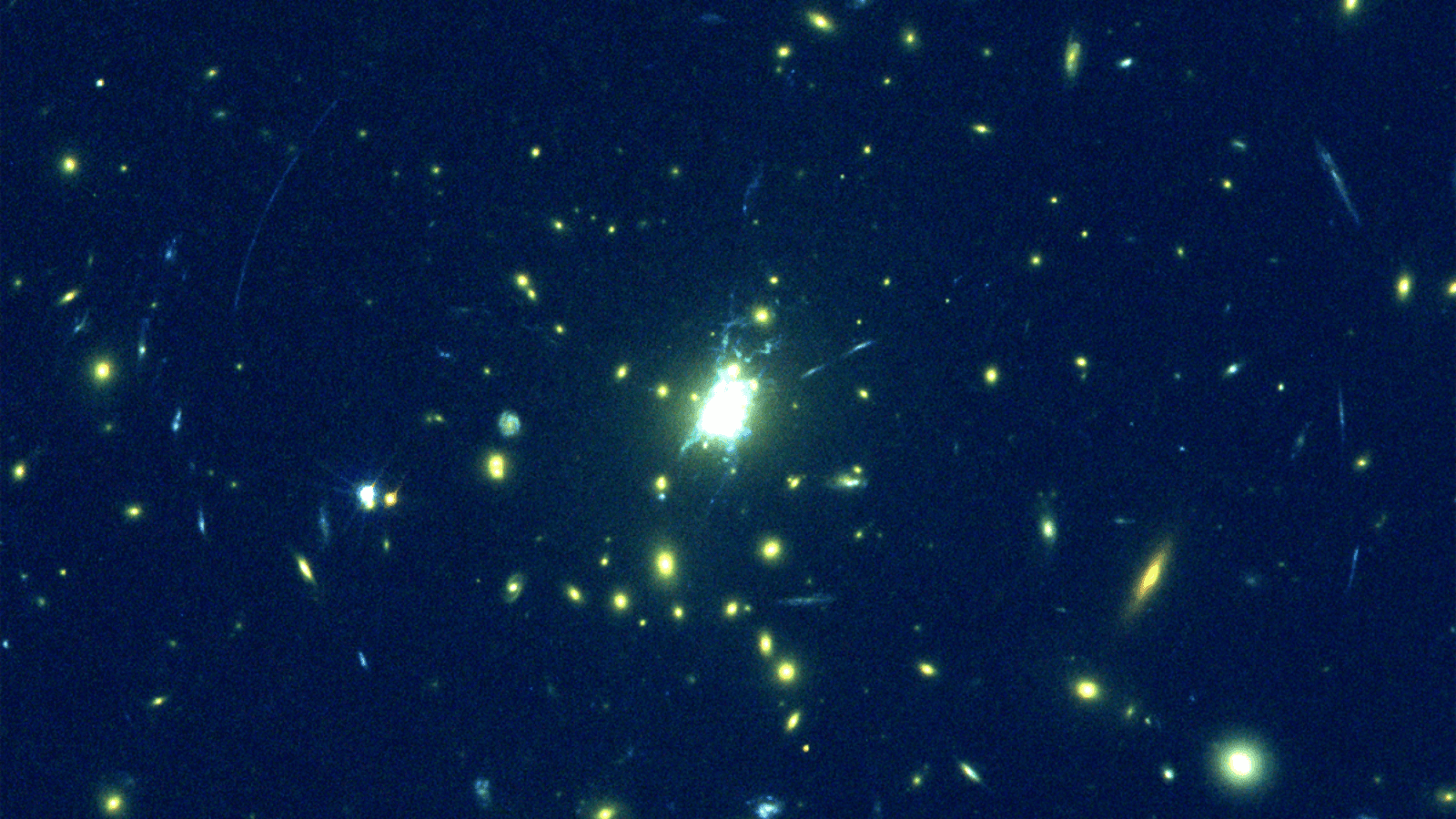Observing the Behavior of Galaxies, the Universe's "Animals"
by Adam Hadhazy
Astronomers continue to gain new insight into the ways of galaxies, the most significant individual structures found in the cosmos

The Author
Try this analogy on for size. Stars, which in our galaxy alone number about 300 billion, are kind of like the individual biological cells comprising a galactic organism. OK, sure, real cells are far more differentiated in their range of possible characteristics compared to (broadly similar) stars. And yes, cells group into complex organs and organ systems. And yes, the true human cell count—upwards of 37 trillion per person—is a couple orders of magnitudes beyond the example of our good-sized galaxy. But you get the point: On cosmic scales, stars make up galaxies, like cells, but it's the galaxies themselves that comprise the key population of entities out there; they're the creatures that roam the universal savannah. The analogy actually works on some deeper levels because galaxies—like animals—"eat" each other, with the big especially gobbling up the small, so-called dwarf galaxies. Also like animals, galaxies age and change, their stellar (cellular?) constituents transitioning from young to elderly.
Extending this line of thought even further, you could say astronomers are like primatologists in observing how these galactic beasts behave and interact, paralleling Jane Goodall and her famous work with wild chimpanzees. This past month, Kavli Institute-affiliated researchers definitely got their Goodall on. The researchers took steps forward in understanding how galaxies go about their cosmic lives, individually and together. New studies offered insight into galaxies forming new stars, their lumping together to build up great clusters and filaments (ape troops?), and the ways they influence their surrounding environments.
While we understand galaxies in broad strokes, many details remain unclear about their inner lives, if you will, about their processes of development and growth. We also still have much to decipher about the manner in which galactic interactions over billions of years have given us the universe we see through various cosmic epochs. From the rise of the first galaxies, to the establishment of mature types (like our own Milky Way) that dominate the modern landscape, the full story of the universe's megafauna remains untold. Stay tuned as Kavli researchers and colleagues continue to watch and learn.
- Pile-up of three galaxies glimpsed in the early universe
Researchers at the Kavli Institute of Cosmology, Cambridge (KICC) have discovered a rare triple merger of galaxies just 1.3 years after the Big Bang. The finding sheds light on how smaller galaxies combined to build up toward large galaxies in the modern universe, an evolutionary path that is broadly grasped but with many key details still missing.
- Newly studying star formation in x-rays at great cosmic distances
For the first time, scientists have succeeded in wielding a natural, cosmic "magnifying glass" to study a distant, energetic, x-ray-emitting source. The magnifying glass is a massive galaxy cluster about 5.7 billion light-years away, whose potent gravity has warped x-rays emitted by hot, giant stars freshly formed in a fledgling, far-off galaxy located 9.4 billion light-years away. The research team includes members at the Massachusetts Institute of Technology's Kavli Institute for Astrophysics and Space Research (MKI) and the Kavli Institute for Cosmological Physics (KICP) at the University of Chicago.
- Thrice as nice: New gravitational wave observatory joins the hunt
The Kamioka Gravitational-Wave Detector (KAGRA) in Japan is preparing to join up with the planet's other two gravitational wave hunters, the Laser Interferometer Gravitational-wave Observatory (LIGO, led in part by members of MKI) in the United States and Virgo in Italy. The combined power of the observatories will help in drawing fine details out of g-wave events as well as pinpointing their sources on the sky. The principal investigator of the KAGRA project, Takaaki Kajita, is a member of the Kavli Institute for the Physics and Mathematics of the Universe (Kavli IPMU) at the University of Tokyo.
- Quasar heats its surroundings, quenches star formation
KICC researchers and colleagues have found hot gas around one of the most luminous quasars on record. Quasars are extremely bright, young galaxies whose central black holes are gorging on matter, releasing energy in the process. That energy has warmed gas surrounding the galaxy, as well as likely inside the galaxy, preventing the gas from cooling to form new stars—a mechanism astrophysicists are keen to further explicate with regard to galactic evolution.
- Powerful new dark energy instrument gears up
The Dark Energy Spectroscopic Instrument (DESI), a next-generation sky-scanner, is undergoing final testing. It will track the movements of 35 million galaxies stretching back over 11 billion years of cosmic history, assessing the role of so-called dark energy in accelerating the universe's expansion. Members of the Kavli Institute for Particle Astrophysics and Cosmology (KIPAC) at Stanford University are part of the international collaboration.